The Valley of the Kings, a renowned archaeological site located on the west bank of the Nile River in Luxor, Egypt, is home to the final resting places of many of ancient Egypt’s most powerful pharaohs and nobility. With over 60 tombs discovered to date, this burial ground served as the royal necropolis during the New Kingdom period (approximately 1550-1070 BCE). Among the many tombs, some of the most famous are those of King Tutankhamun, Ramses II, and Seti I, each offering invaluable artifacts and wall paintings that provide key insights into Egyptian history, culture, and religion. This complete list of tombs in the Valley of the Kings includes detailed information on all known tombs, highlighting the fascinating stories and secrets they hold. The valley remains a symbol of ancient Egypt’s grandeur, attracting archaeologists, historians, and tourists alike, all eager to uncover the mysteries of this ancient burial site.
- Egypt Tour Magic
- Egypt Tour Packages
- Excursions in Egypt
- Cairo Tours and Excursions
- Hurghada Tours and Excursions
- Soma Bay Tours and Excursions
- Makadi Bay Tours and Excursions
- Sahl Hasheesh Tours and Excursions
- El Gouna Tours and Excursions
- Marsa Alam Tours and Excursions
- Port Ghalib Tours and Excursions
- El Quseir Tours and Excursions
- Dendera and Abydos Day Tours
- Aswan Tours and Excursions
- Luxor Tours and Excursions
- Alexandria Tours and Excursions
- Sharm El Sheikh Tours and Excursions
- Top Rated Tours in 2025
- Optional Excursions in Egypt
- Private Transfer
- Blogs About egypt
- Ancient Egypt
- What You Need To know Before Your First Trip To Egypt
- Best Places to Visit in Egypt 2025
- Top Attractions in Red Sea Resorts 2025
- Top 10 Tourist Activities in Egypt
- Top 30 Activities You Can’t Miss in Egypt
- The Guide to Guided Tours in Egypt
- Egypt’s Ancient and Modern History
- The Nile River
- The Deserts of Egypt
- Historical Sites in Egypt
- Cairo
- Alexandria
- Luxor
- Aswan
- The Red Sea
- Dendera Temple
- El Fayoum Oasis
- Bahariya Oasis
- Siwa Oasis
- Al Alamein
- Marsa Matruh
- Ancient Egyptian gods
- famous Egyptian dishes
- UNESCO World Heritage sites
- About Us
- Why Egypt Tour Magic
- Egypt Tour Magic
- Egypt Tour Packages
- Excursions in Egypt
- Cairo Tours and Excursions
- Hurghada Tours and Excursions
- Soma Bay Tours and Excursions
- Makadi Bay Tours and Excursions
- Sahl Hasheesh Tours and Excursions
- El Gouna Tours and Excursions
- Marsa Alam Tours and Excursions
- Port Ghalib Tours and Excursions
- El Quseir Tours and Excursions
- Dendera and Abydos Day Tours
- Aswan Tours and Excursions
- Luxor Tours and Excursions
- Alexandria Tours and Excursions
- Sharm El Sheikh Tours and Excursions
- Top Rated Tours in 2025
- Optional Excursions in Egypt
- Private Transfer
- Blogs About egypt
- Ancient Egypt
- What You Need To know Before Your First Trip To Egypt
- Best Places to Visit in Egypt 2025
- Top Attractions in Red Sea Resorts 2025
- Top 10 Tourist Activities in Egypt
- Top 30 Activities You Can’t Miss in Egypt
- The Guide to Guided Tours in Egypt
- Egypt’s Ancient and Modern History
- The Nile River
- The Deserts of Egypt
- Historical Sites in Egypt
- Cairo
- Alexandria
- Luxor
- Aswan
- The Red Sea
- Dendera Temple
- El Fayoum Oasis
- Bahariya Oasis
- Siwa Oasis
- Al Alamein
- Marsa Matruh
- Ancient Egyptian gods
- famous Egyptian dishes
- UNESCO World Heritage sites
- About Us
- Why Egypt Tour Magic
List of Tombs in the Valley of the Kings : A Complete Guide to the Tombs of Ancient Egypt

KV1 – Ramesses VII
The tomb of Ramesses VII, a pharaoh from the 20th Dynasty, is located in the western part of the valley. The tomb’s design is relatively modest compared to others, with a narrow, steep passage leading to the burial chamber. Despite some looting, portions of the tomb’s walls still contain vivid depictions of scenes from the Book of the Dead, offering a glimpse into the religious beliefs of the time. The tomb’s decoration also reflects the king's divine journey into the afterlife, though much of the artwork has been severely damaged over time.
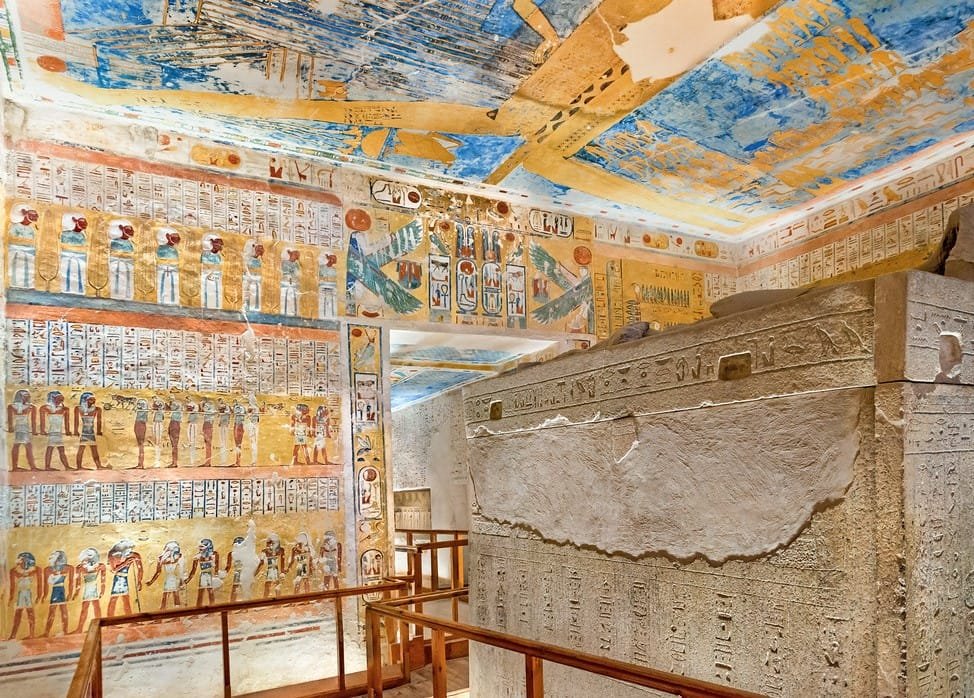
KV2 – Ramesses II
Ramesses II, also known as Ramesses the Great, was one of Egypt's most powerful and longest-reigning pharaohs. His tomb, KV2, is one of the largest and most elaborate in the Valley of the Kings. It features a long corridor, decorated with scenes from the Book of Gates, Book of the Dead, and the Litany of Ra. The tomb’s murals depict Ramesses II in the afterlife, traveling through various stages of spiritual and cosmic transformation. The grandeur of the tomb matches his legendary reign, with massive, towering columns in the burial chamber.

KV3 – Merneptah
The tomb of Merneptah, the 13th son of Ramesses II, is notable for its clear and detailed reliefs. The tomb features scenes from the Book of the Dead, with strong emphasis on the king’s religious rituals. Merneptah's tomb also contains depictions of his military exploits, including victories over the Libyans and the Sea Peoples. One of the most famous artifacts from this tomb is the Merenptah Stele, which mentions the Israelites, making it an important archaeological find for understanding ancient Egypt’s interactions with surrounding civilizations.
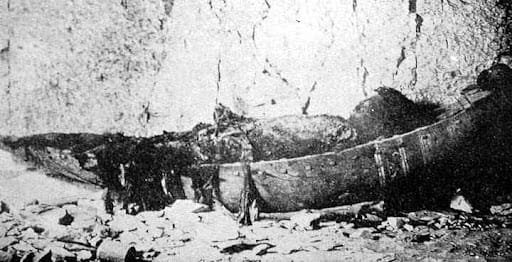
KV4 – Amunherkhopshef
The tomb of Amunherkhopshef, a son of Ramesses III, is relatively modest compared to other royal tombs. Amunherkhopshef’s tomb includes a narrow corridor leading to the burial chamber, with several scenes depicting the prince's religious and royal duties. The tomb also includes symbolic images of the afterlife, with murals illustrating the journey of the soul to the afterlife. Despite being a royal tomb, it is much smaller and less elaborately decorated than those of his powerful ancestors.
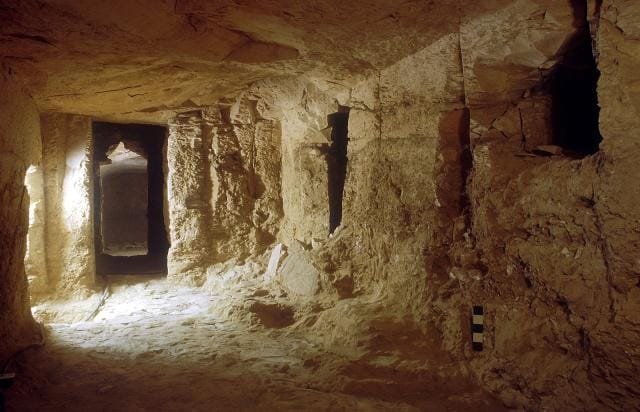
KV5 – Sons of Ramesses II
KV5, one of the largest tombs in the Valley, was used by the **sons of Ramesses II. Discovered in 1995, it contains over 100 burial chambers, many of which were used by the numerous children of Ramesses II. The tomb offers important insight into the royal family of the 19th Dynasty. The tomb is filled with beautiful, well-preserved reliefs and paintings, many of which were unfinished when the tomb was abandoned. It is one of the largest and most complex tombs ever discovered in Egypt.
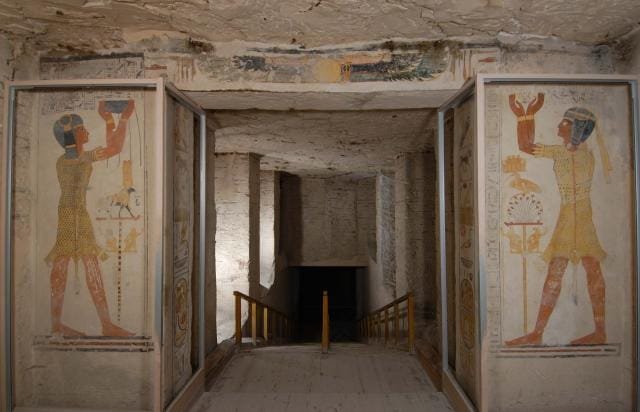
KV6 – Ramesses IX
The tomb of Ramesses IX is a well-preserved and richly decorated tomb of a late 20th Dynasty pharaoh. The murals, though partially damaged, offer a fascinating look into the burial rituals and afterlife beliefs of the time. The tomb features scenes from the Book of the Dead, with particular emphasis on the king's journey through the underworld. There are also images of Ramesses IX participating in various ceremonies, providing insights into royal life during his reign. However, the tomb was heavily looted in antiquity, and many of its treasures are now lost.
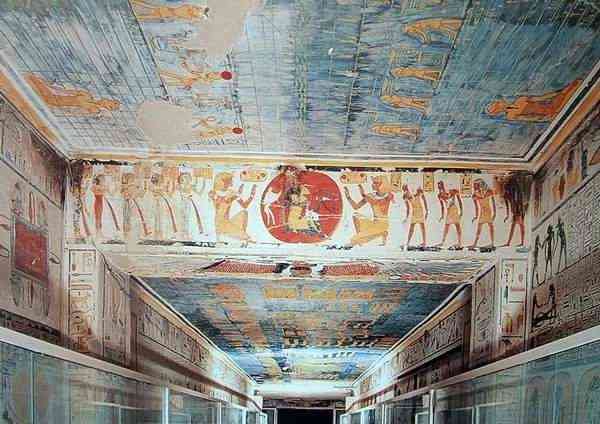
KV7 – Ramesses IV
The tomb of Ramesses IV, a pharaoh of the 20th Dynasty, is one of the largest and most elaborate in the Valley. The tomb is decorated with extensive scenes from the Book of the Gates, which show the king’s journey through the underworld. The walls also depict rituals associated with the pharaoh’s afterlife. The tomb’s design and decoration reflect the growing importance of the afterlife during this period. The burial chamber contains a massive sarcophagus, though the tomb was looted in antiquity, and many of its treasures were removed.

KV8 – Merenptah
Merenptah, the 13th son of Ramesses II, is buried in KV8, a tomb that is renowned for its vivid and well-preserved reliefs. The walls of the tomb depict scenes from the Book of the Dead, and the king is shown engaging in various religious rituals. The tomb also contains depictions of the king’s military campaigns and victories, which were crucial to his reign. The Merenptah Stele, discovered in this tomb, is an important artifact in the study of the ancient Near East and contains the first known mention of Israel.

KV9 – Ramesses V/VI
This tomb, used by both Ramesses V and Ramesses VI, is one of the longest tombs in the Valley. It features extensive reliefs and paintings, including scenes from the Book of the Dead. The king is shown making offerings to the gods and traveling through the afterlife. The tomb also contains depictions of the king in ritual ceremonies and battles. The burial chamber contains a stone sarcophagus, though much of the tomb has been damaged by looting.
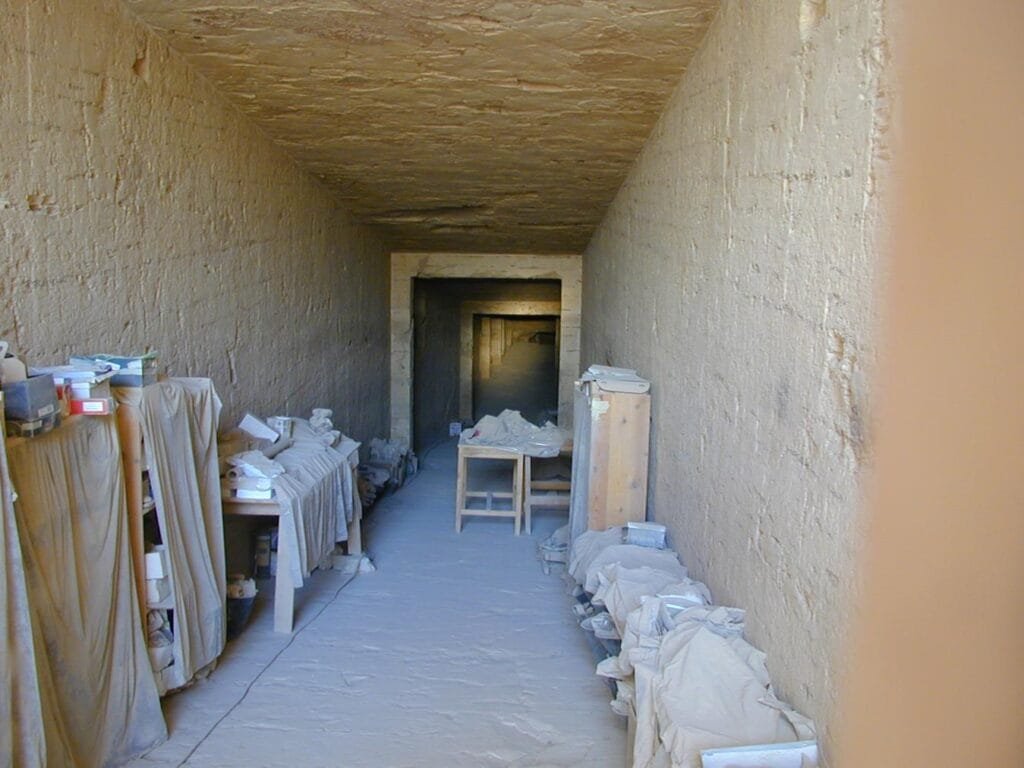
KV10 – Amenmesse
Amenmesse, a short-lived pharaoh who briefly ruled Egypt, is buried in KV10. The tomb is smaller and simpler than those of other royal pharaohs but still contains some well-preserved reliefs and inscriptions. The tomb features scenes from the Book of the Dead and depicts Amenmesse’s divine status and role in the afterlife. There is some debate about the identity of Amenmesse and the nature of his reign, with some scholars believing he may have been a usurper to the throne.

KV11 – Seti I
The tomb of Seti I, one of the finest in the Valley, is known for its elaborate design and high-quality artwork. The tomb’s walls are covered with stunning reliefs from the Book of the Gates and Book of the Caverns, with scenes illustrating the pharaoh's journey through the afterlife. The Hall of Beauties, located in the tomb, contains beautiful depictions of divine and royal figures. Seti I’s tomb is considered one of the most complete and well-preserved examples of ancient Egyptian burial practices.

KV12 – Ramesses I
The tomb of Ramesses I, the founder of the 19th Dynasty, is smaller and more modest compared to the tombs of later pharaohs. The tomb contains basic decorations, including scenes from the Book of the Dead, and the pharaoh is shown in various stages of his journey into the afterlife. Though the tomb is not as grand as others, it still offers insight into the early practices of the 19th Dynasty.
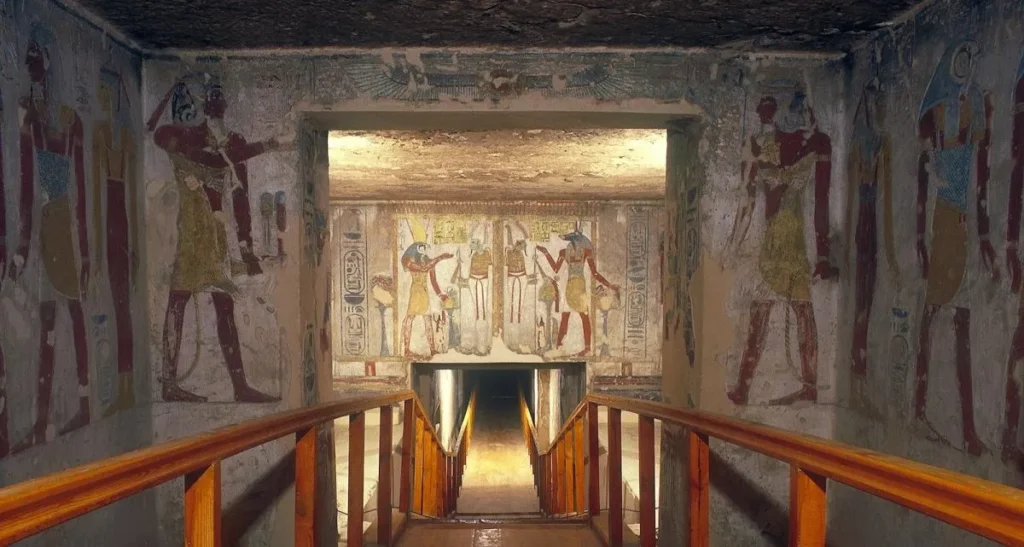
KV13 – Ramesses VIII
Ramesses VIII’s tomb is small and relatively simple compared to the more famous tombs in the valley. The tomb’s walls feature basic scenes of the king participating in religious rituals, though the artwork is less elaborate than in other tombs. The tomb was looted in antiquity, and very little of the original contents remain.
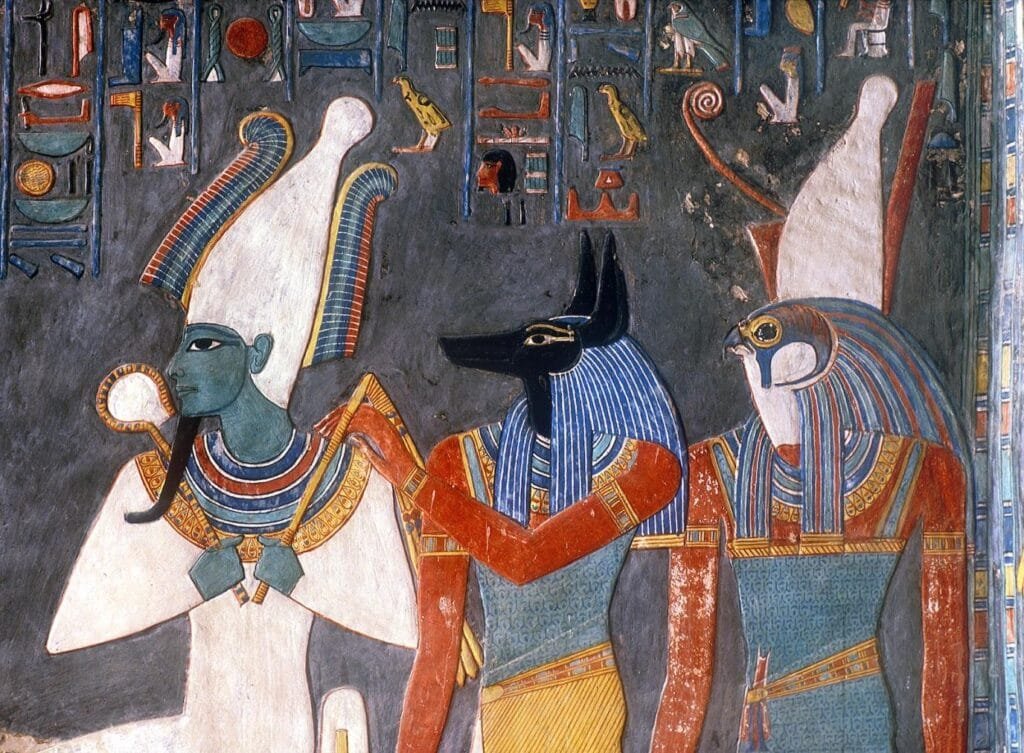
KV14 – Horemheb
The tomb of Horemheb, the last pharaoh of the 18th Dynasty, is notable for its elegant and detailed reliefs. The tomb contains scenes of the king’s military achievements, and it features beautiful depictions of the king in the afterlife, making his journey through the underworld. Horemheb’s tomb also contains references to the god Amun, reflecting his close relationship with the religious institutions of his time.

KV15 – Seti II
The tomb of Seti II, a relatively short-lived pharaoh, is small and relatively simple. However, it still contains several important scenes from the Book of the Dead and depicts the king in a series of rituals associated with his passage into the afterlife. The tomb has been looted over time, but some reliefs are still visible, particularly in the burial chamber.

KV16 – Ramesses III
The tomb of Ramesses III, one of the last great pharaohs of the New Kingdom, is one of the most significant in the Valley of the Kings. The tomb is large and decorated with impressive reliefs that tell the story of the king’s reign, military campaigns, and his journey into the afterlife. The tomb is also known for the size and quality of its burial chamber, which contains a massive sarcophagus made of red granite.

KV17 – Ramesses IX
The tomb of Ramesses IX is well-decorated with vivid and beautiful murals that show the pharaoh’s journey through the afterlife. The tomb includes scenes from the Book of the Dead, Book of Gates, and other texts related to the journey of the soul. The tomb was looted in antiquity, and much of its treasure was stolen, but the artwork has remained an important source of historical information.

KV18 – Ramesses III
The tomb of Ramesses III is one of the largest and most elaborate in the Valley of the Kings. The tomb’s walls are decorated with stunning reliefs that show the king’s journey into the afterlife, including scenes from the Book of the Dead. The tomb also contains extensive depictions of Ramesses III’s military campaigns and religious rituals, making it one of the most comprehensive tombs in the valley.
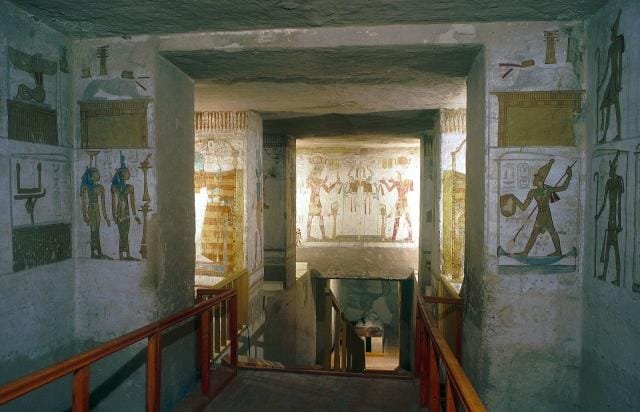
KV19 – Seti II
Seti II’s tomb is relatively modest but still contains several interesting reliefs depicting the king’s journey through the afterlife. The tomb’s murals are not as elaborate as those of his father, Seti I, but they still provide insight into the religious beliefs of the time.

KV20 – Tutankhamun
The tomb of Tutankhamun, one of the most famous pharaohs of ancient Egypt, was discovered by Howard Carter in 1922. Despite being the smallest royal tomb in the Valley of the Kings, it yielded an extraordinary wealth of artifacts, including the iconic golden burial mask that has become a symbol of ancient Egypt. The tomb's chamber was filled with treasures intended for the king's journey to the afterlife, providing unmatched insight into the wealth, artistry, and beliefs of the time. The discovery of Tutankhamun's tomb is considered one of the most significant archaeological events in history, and it helped to illuminate much about the funerary practices and royal life of the 18th Dynasty.
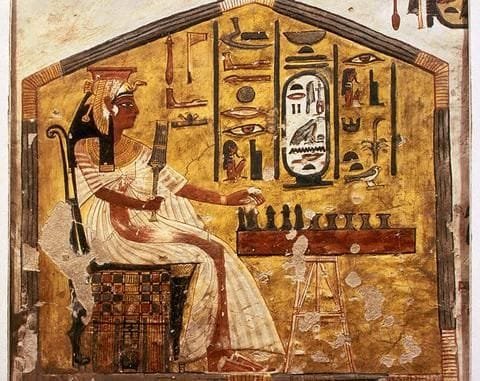
KV21 – Nefertari (Queen of Ramesses II)
The tomb of Queen Nefertari, the beloved wife of Ramesses II, is often regarded as one of the most beautiful and well-preserved tombs in Egypt. Located in the Valley of the Queens, it features stunning wall paintings and reliefs that are filled with vibrant colors and intricate details. The walls depict scenes from the Book of the Dead, where Nefertari is shown in the presence of gods and undergoing various stages of the afterlife. The tomb is a true masterpiece of ancient Egyptian art, showcasing the queen's divine status and her eternal journey through the underworld. It reflects the high regard that Ramesses II had for his queen, making it one of the most extraordinary royal tombs.
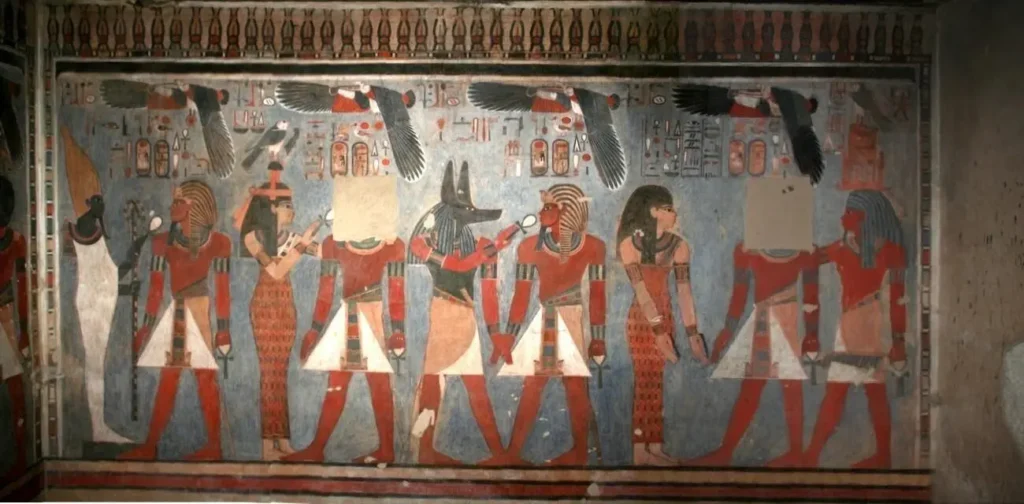
KV22 – Ramesses XII
Ramesses XII was a relatively lesser-known pharaoh of the 20th Dynasty. His tomb, KV22, is much smaller compared to the elaborate tombs of his predecessors. The tomb features simple decorations, primarily focusing on scenes from the Book of the Dead that depict the pharaoh's journey to the afterlife. Despite the modest design, it provides valuable insight into the burial practices of the time and the changing artistic styles toward the end of the New Kingdom. The tomb is generally less well-preserved due to looting, but it still holds historical significance for understanding the reign of Ramesses XII and the waning years of the 20th Dynasty.
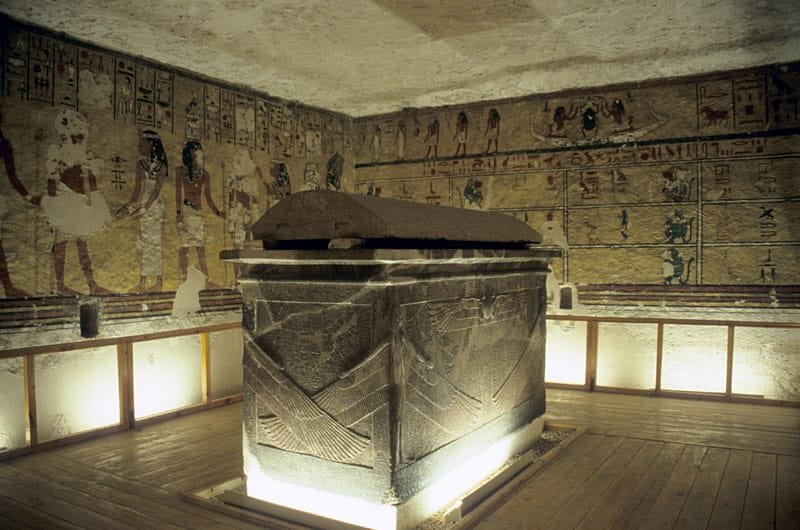
KV23 – Aye
Aye, who briefly ruled Egypt after the death of Tutankhamun, is buried in KV23. His tomb is smaller and simpler than those of earlier pharaohs, reflecting his brief and somewhat uncertain reign. The tomb features some simple decorations, though much of it remains undecorated. There are scenes of Aye's journey to the afterlife, but the lack of extensive artwork and treasures reflects the more modest nature of his reign. Scholars suggest that the tomb was hastily constructed and may not have been intended as a royal burial site, highlighting the instability of Egypt during his short time on the throne.
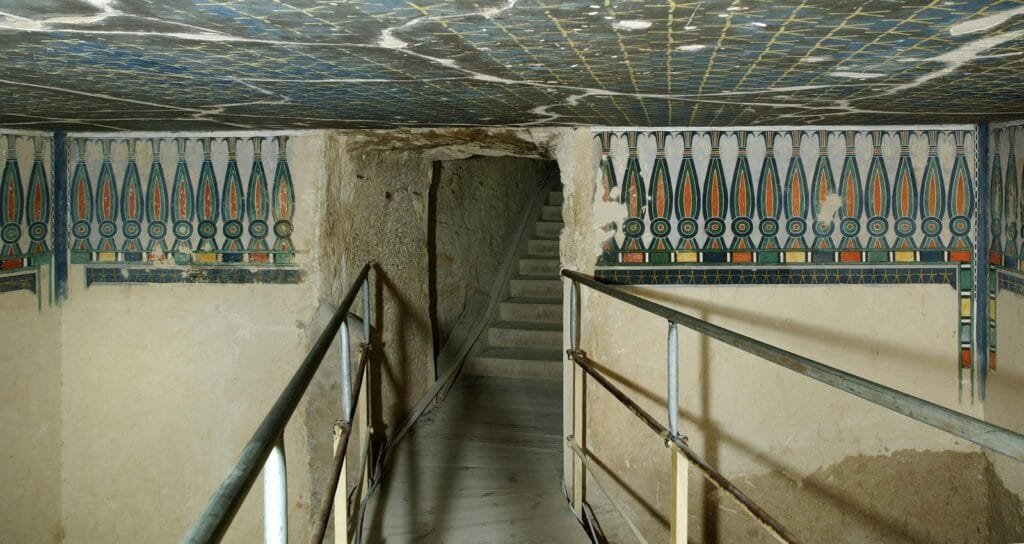
KV24 – Thutmose III
The tomb of Thutmose III, one of Egypt’s greatest pharaohs, is among the most significant and elaborately decorated in the Valley of the Kings. Known as the Napoleon of Egypt, Thutmose III expanded the Egyptian empire to its greatest territorial extent. The tomb features extensive reliefs that depict his military campaigns, religious rituals, and journey into the afterlife. The walls are adorned with images of the king participating in rituals from the Book of the Dead, and the tomb offers a detailed record of his reign and achievements. Thutmose III’s tomb provides crucial insight into the pomp and grandeur of royal burials in the 18th Dynasty.
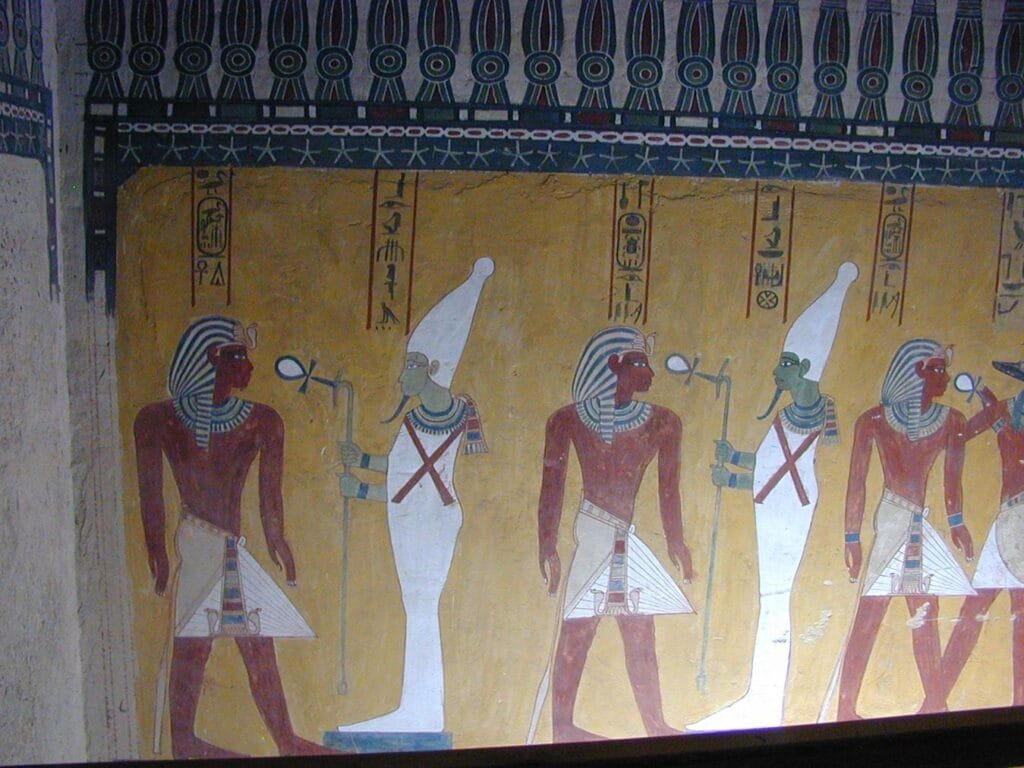
KV25 – Thutmose IV
Thutmose IV's tomb is relatively modest compared to the grandeur of his predecessors. However, it remains an important example of New Kingdom tomb design. The tomb is best known for its preservation and the beautifully painted walls depicting the king’s relationship with the gods, particularly his divine connection with the sun god Amun-Ra. Thutmose IV is depicted in various scenes where he makes offerings to the gods, signifying his role as a divine ruler. While the tomb is less elaborate, it is an important record of the art and symbolism associated with the royal family of the 18th Dynasty.
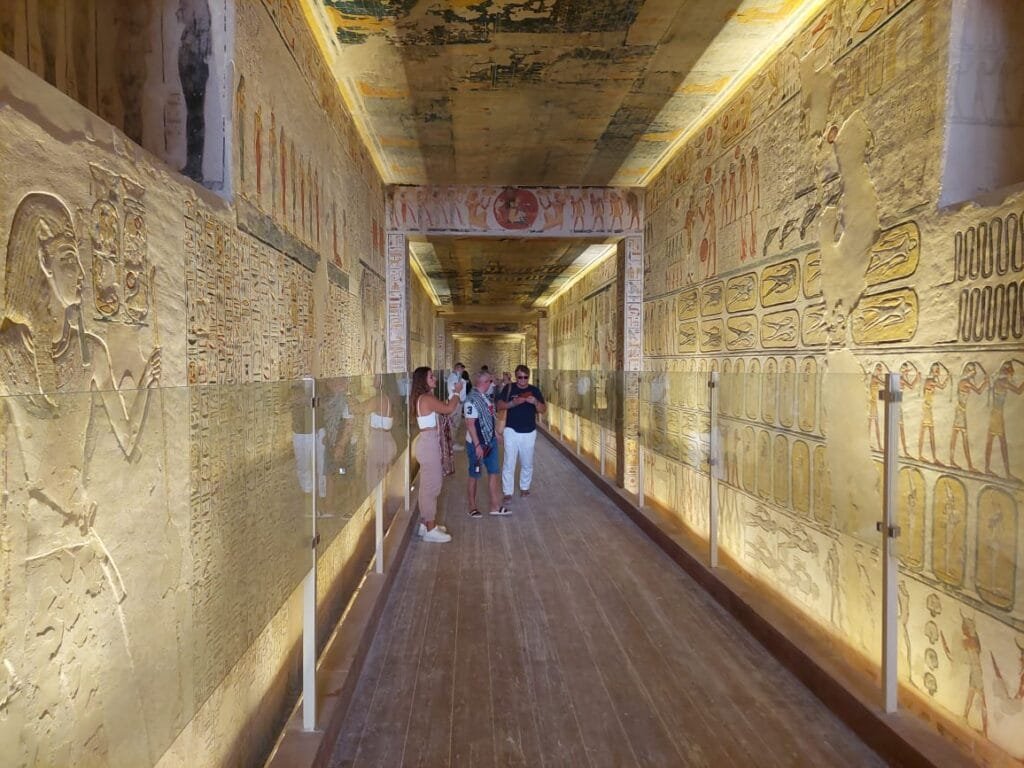
KV26 – Amenemhat
The tomb of Amenemhat, though relatively small, offers a glimpse into the burial practices of lesser-known individuals from the 18th Dynasty. Scholars are uncertain if this tomb was originally intended for a royal figure, as some aspects of its design and decoration are inconsistent with that of typical royal tombs. The artwork is simple, and the tomb features a few murals from the Book of the Dead. The tomb’s lack of grandeur and decoration suggests that Amenemhat was likely not a major figure in Egypt's history, but the tomb still offers valuable insights into the broader tomb-building traditions of the time.

KV27 – Unknown
KV27 is a tomb that remains largely mysterious. It is generally believed to belong to an unnamed royal figure, possibly a lesser-known member of the 18th Dynasty. However, because the tomb has been looted and its original contents are largely missing, there are no definitive answers about the identity of the occupant. There is speculation that the tomb may belong to a prince or lesser ruler whose death was not marked by the extensive resources reserved for the burials of more prominent pharaohs.

KV28 – Ramesses X
The tomb of Ramesses X is relatively simple and lacks the elaborate decorations seen in the tombs of earlier pharaohs. It is located in a less prominent area of the Valley and reflects the instability and decline of Egypt's New Kingdom during his reign. Ramesses X's reign was short and marked by turmoil, which is reflected in the sparse design of his tomb. The tomb is not as well-preserved as others, but it still provides insight into the burial practices during the latter years of the 20th Dynasty.
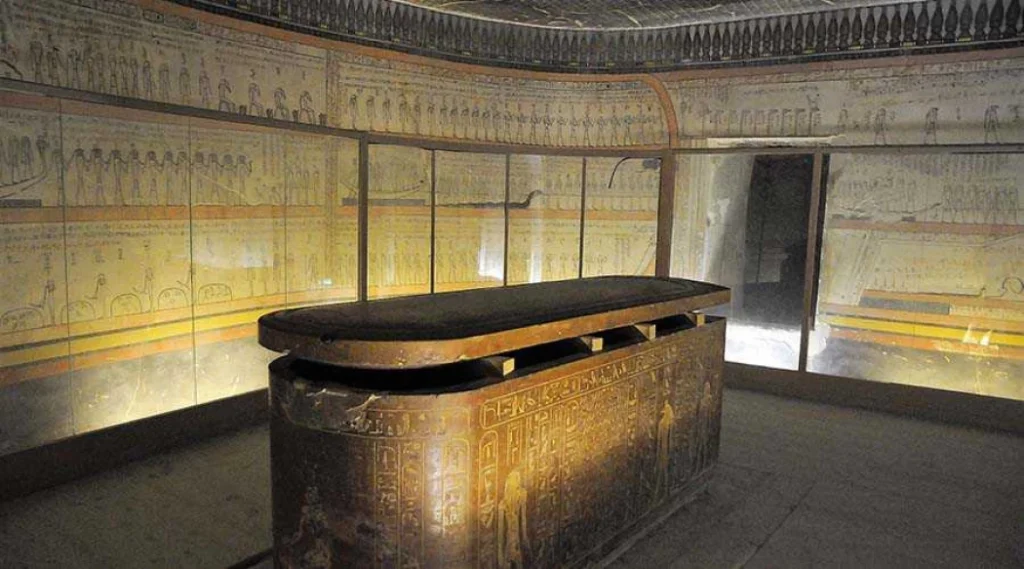
KV29 – Thutmose I
The tomb of Thutmose I, one of the early rulers of the 18th Dynasty, features some unique wall paintings that provide valuable insights into early New Kingdom burial practices. Thutmose I was a significant figure in Egyptian history, and his tomb reflects the wealth and grandeur of his reign. The tomb features scenes from the Book of the Dead, depicting the king’s journey through the afterlife. It also includes inscriptions and reliefs celebrating his military achievements and his relationship with the gods. The tomb is a testament to the early New Kingdom’s artistic and funerary traditions.
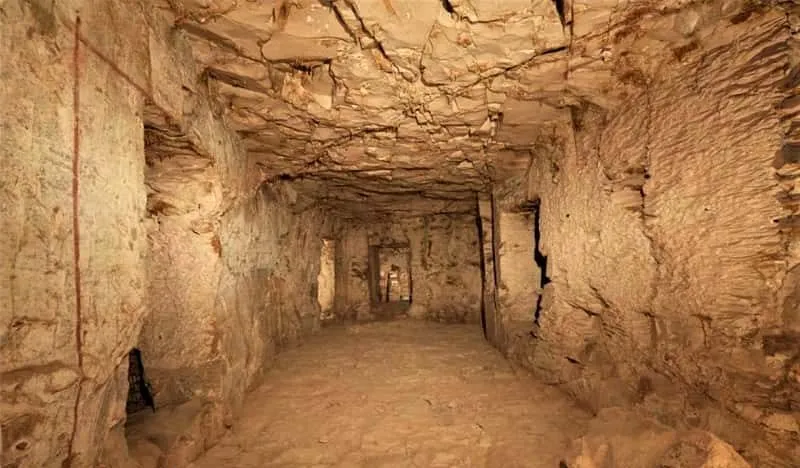
KV30 – Thutmose II
Thutmose II’s tomb is smaller but includes several beautifully preserved reliefs and inscriptions, despite the fact that much of the decoration has been damaged over time. The tomb features scenes depicting the king's divine status and his journey through the afterlife. Thutmose II’s reign was relatively short, and the tomb’s modest design may reflect his limited impact compared to his successors. Nevertheless, the tomb still provides important information about the burial customs of early New Kingdom pharaohs.
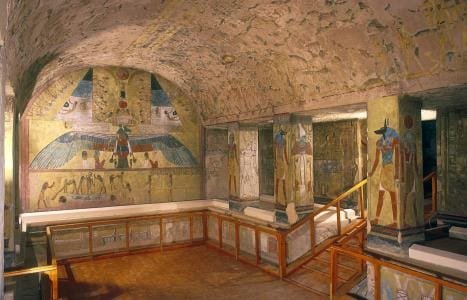
KV31 – Hatshepsut
The tomb of the famous female pharaoh Hatshepsut is located in the Valley of the Queens rather than the Valley of the Kings. However, it is often mentioned in the context of royal tombs due to her significance. Hatshepsut’s tomb was never completed, and some scholars suggest that she was ultimately buried in KV20, which was originally constructed for Tutankhamun. Hatshepsut's tomb was designed with terraces and ramps leading to different levels, reflecting the architectural achievements of her reign. The tomb is now mostly in ruins, but it offers valuable insight into the era’s tomb construction methods.

KV32 – Hatshepsut’s Daughter
This tomb is believed to belong to Hatshepsut’s daughter, though scholars continue to debate her identity. The tomb is less elaborate than those of the pharaohs, but it still holds significant historical interest, providing insights into the royal family of the 18th Dynasty. The tomb’s design is simpler than the grander royal tombs, but it is still an important example of the burial customs for members of the royal family who were not pharaohs.

KV33 – Ahmose
The tomb of Ahmose, the founder of the 18th Dynasty, is notable for its inscriptions, which provide valuable historical context for the early years of the New Kingdom. Ahmose's reign marked the beginning of a new era in Egypt’s history, and his tomb reflects the royal imagery and funerary practices of the time. The tomb features some artwork celebrating Ahmose’s military achievements, especially his role in expelling the Hyksos and unifying Egypt once again.

KV34 – Khaemwaset
Khaemwaset, the son of Ramesses II, is believed to be buried in this tomb. Known as a prince, high priest, and scholar, Khaemwaset’s tomb reflects his important religious role and military exploits. The walls of the tomb are decorated with scenes of his military victories, as well as depictions of his role in religious rituals. Khaemwaset's tomb is significant not only for its artistic quality but also for the insight it provides into the role of royal children and religious leaders in ancient Egypt.
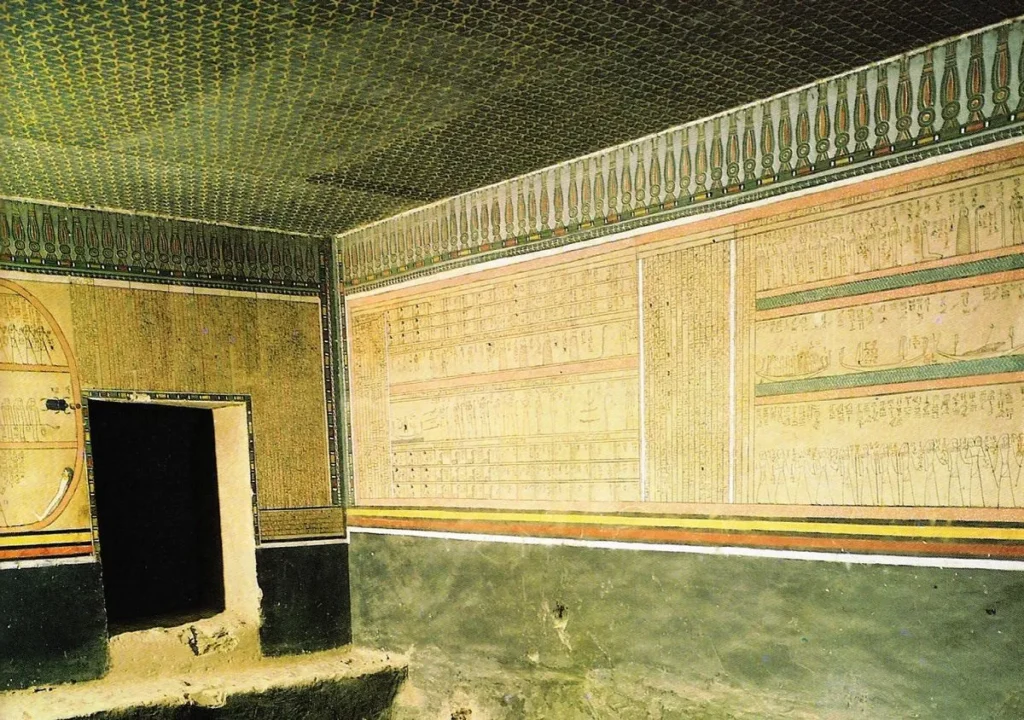
KV35 – Ramesses II (Section Tomb)
This section of the tomb is believed to be associated with Ramesses II, the longest-reigning pharaoh of Egypt. It may have been used for part of his burial or for the remains of his family members. The tomb’s design is elaborate, with beautiful reliefs depicting the king’s journey into the afterlife. Although much of the tomb remains unfinished, it still holds significant historical value.

KV36 – Thutmose I
The tomb of Thutmose I is a simpler burial site compared to the grander tombs of later pharaohs. Its design reflects the early years of the 18th Dynasty, with a relatively modest burial chamber adorned with religious imagery. The tomb is not as elaborate as those of his successors, but it offers valuable insight into the development of royal tomb architecture in the early New Kingdom.
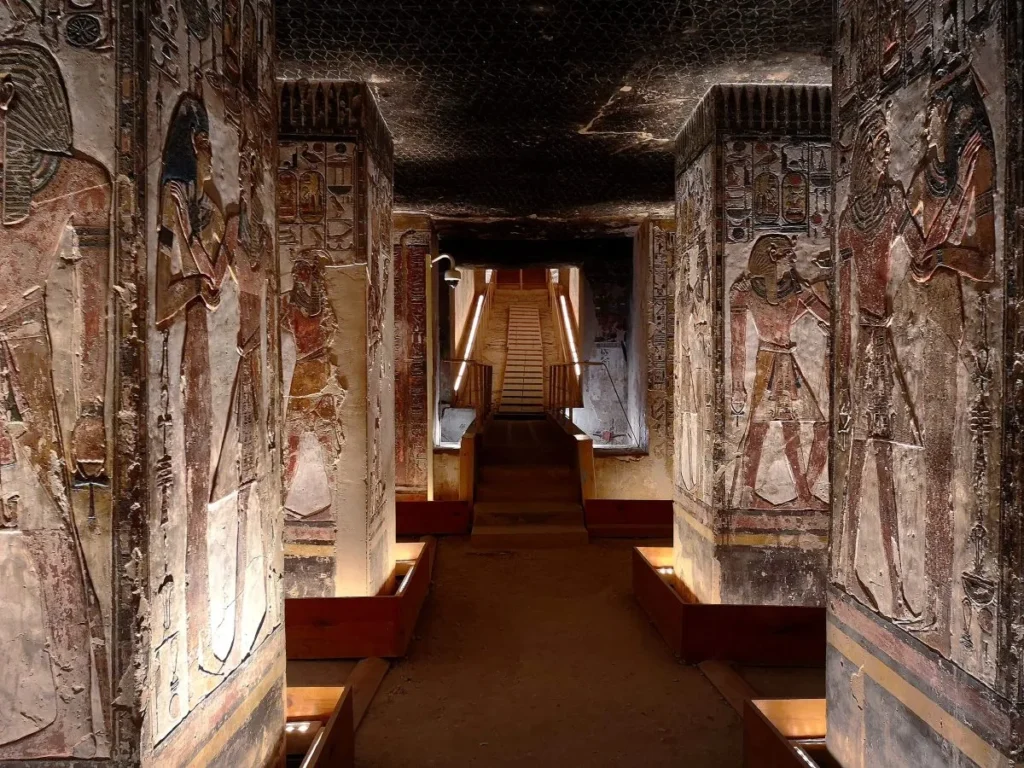
KV37 – Thutmose II
The tomb of Thutmose II is smaller but still contains important royal iconography. The tomb's walls are decorated with scenes from the Book of the Dead and other religious motifs that celebrate the king’s divine nature. The tomb’s size and simple decoration reflect the relatively short reign of Thutmose II, who died young, and it is a valuable example of the New Kingdom’s burial practices.
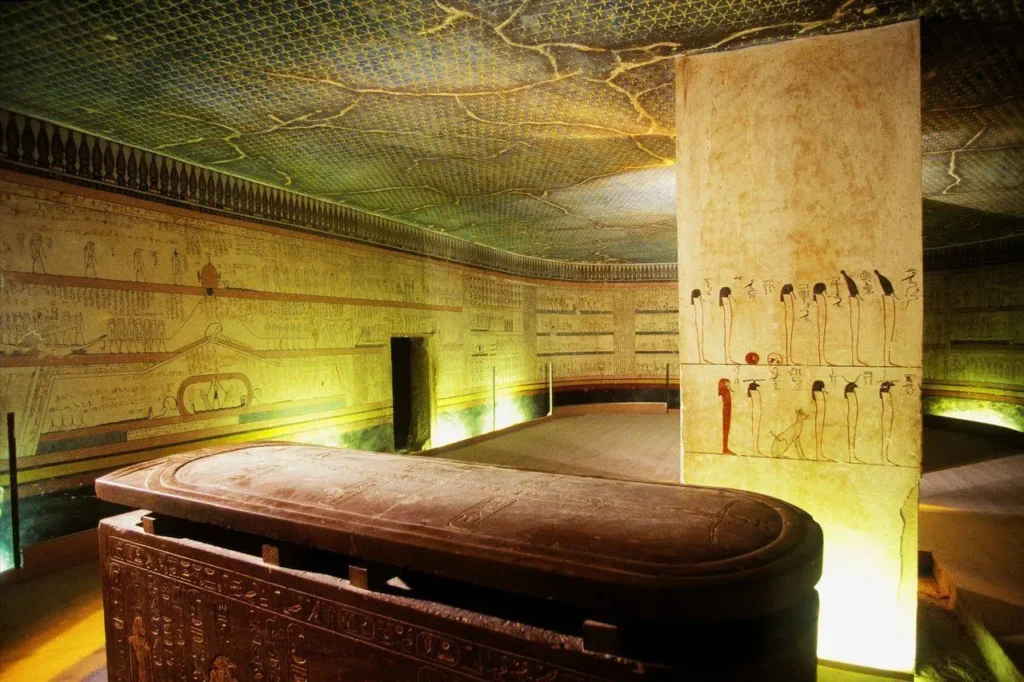
KV38 – Amenhotep I
The tomb of Amenhotep I, who reigned during the early 18th Dynasty, is one of the smaller tombs in the Valley of the Kings. It is located near the tombs of Thutmose I and Thutmose II. This tomb, although relatively simple, is significant because it contains inscriptions and scenes that depict the king’s journey into the afterlife. It is unique in that Amenhotep I’s burial was originally thought to be in a different tomb, but later discoveries suggested that his tomb in the Valley of the Kings may have been adapted over time. The tomb contains a sarcophagus and various burial items, but it is especially noteworthy because Amenhotep I was one of the first pharaohs to be mummified in a way that set the precedent for the elaborate mummification techniques used by later pharaohs.
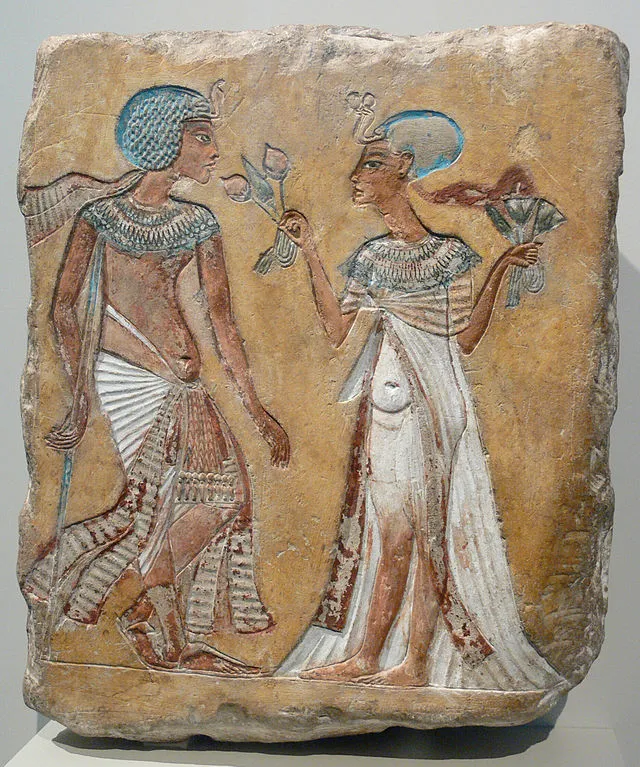
KV39 – Smenkhkare
The tomb of Smenkhkare, a lesser-known pharaoh of the 18th Dynasty, is thought to be located in the Valley of the Kings, although its exact location and identification remain a topic of debate among archaeologists. Smenkhkare briefly ruled after the death of Akhenaten, and his reign is thought to have been quite short. His tomb, if identified correctly as KV39, was likely unfinished at the time of his death. It is believed that his brief reign and uncertain legacy led to a lack of monumental construction or royal wealth, resulting in a more modest tomb. Archaeological evidence has pointed to KV39 containing simple artwork and inscriptions, though much of the tomb remains unexcavated or undisturbed. The discovery of his tomb would offer important insights into the brief period of transition following Akhenaten's rule.


